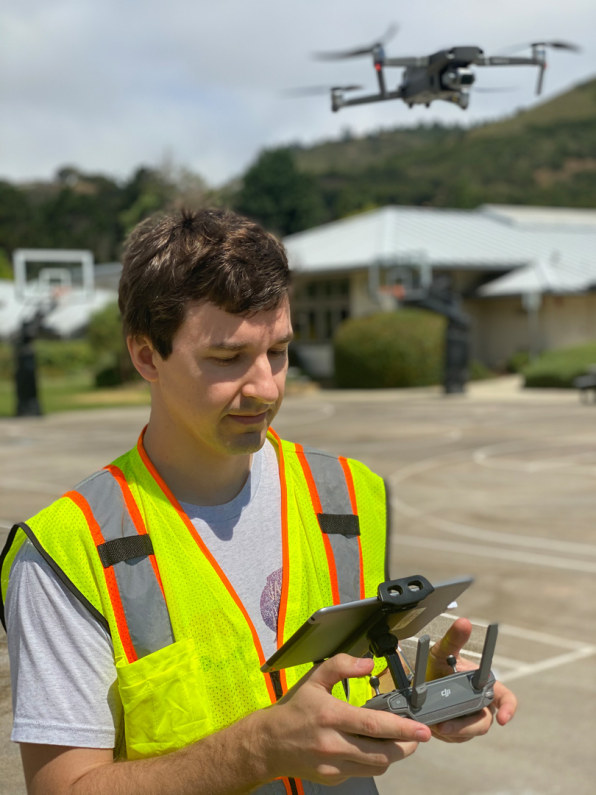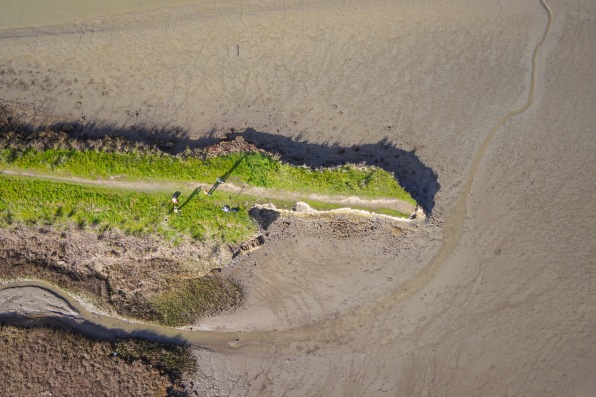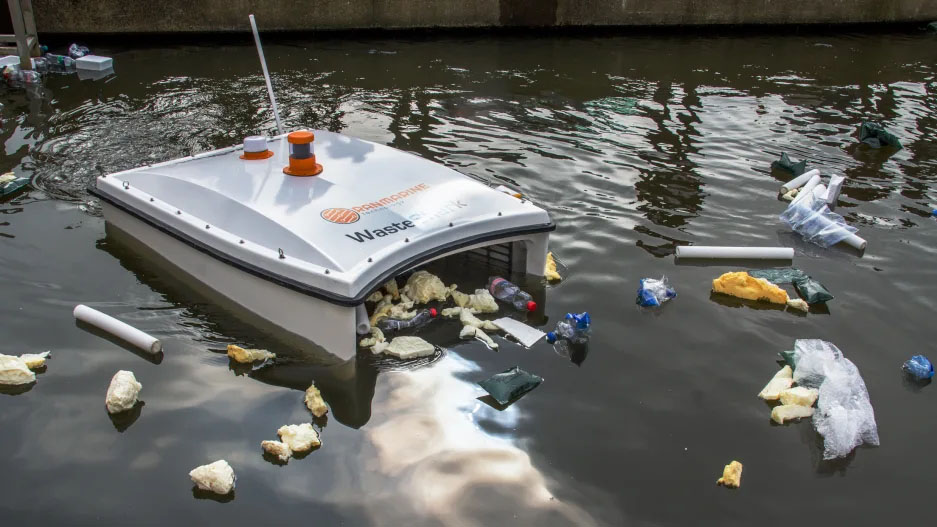[Photo: RanMarine Technology BV]
BY ADELE PETERS
Source: www.fastcompany.com, March 2021
Together, flying drones and sailing drones are helping to clear rivers of plastic waste and oil spills.
In a river in the Danish city of Århus, a small machine called the WasteShark now autonomously sails through the water collecting trash, bringing it to shore, and then recharging itself. Soon, a drone will begin flying through the air to help: Using a special lens that collects data to be crunched by a machine learning algorithm, that drone can identify pieces of plastic or other garbage and direct the sailing drone to pick them up. The system can also identify oil spills, which the WasteShark can help clean up with a special filter.

“We’re testing a technology that can be scaled in a lot of different ways,” says Martin Skjold Grøntved, a special consultant for the Danish Climate Ministry. While the small trash-eating drone isn’t new, the addition of the flying drone makes it possible to find more garbage more quickly. The sailing drone also hasn’t been used to clean up oil spills in the past, because without the drone overhead scanning the water, it wouldn’t be able to identify the oil.

The tech startup Kinetica worked with the agency to provide a data platform, running on Oracle Cloud Infrastructure, that makes the trash detection algorithm run quickly. This isn’t the first time they’ve helped equip drones to detect trash. Kinetica also worked with the nonprofit San Francisco Estuary Institute to test another project that uses drones to track how much waste is entering waterways to help understand how well waste-prevention efforts are working. In the past, that data was difficult to gather at a large scale. “Resources are limited, and city programs have only so much to put towards these efforts,” says Tony Hale, program director for environmental informatics at the San Francisco Estuary Institute. “Nonprofits have only so many people to put towards these efforts. And it’s a very time-intensive process to go out and just do the cleanups, first of all, let alone to count the amount of trash and then characterize it by certain categories. What this drone-based and machine learning-based method offers is a way to expand the geography.”
The nonprofit also tested using drones and an algorithm to identify cigarette butts, another type of toxic plastic pollution. The algorithm was able to identify the cigarette butts with 98% accuracy. Ultimately, Hale says, a mobile tool could be developed that can instantly analyze, image, and share data about the quantity or volume of trash in a particular setting. Because the algorithm can count trash by type, that information could then be used to better design policies that tackle those specific problems. (Cigarettes are a particular challenge because of their volume—an estimated 4.5 trillion butts enter the ocean each year—and the fact that the plastic and heavy metals they contain can be ingested by wildlife.)

This type of work isn’t a complete solution to our waste problem; stopping the flow of plastic waste into the ocean will require rethinking how products are packaged and sold and building better recycling infrastructure. But these types of tools can help governments better understand the scale of the challenge. And systems that catch trash in rivers, as the project in Denmark does, can be a final safeguard to stop plastic and other pollution before it drifts into the ocean, breaks down into tiny fragments, and ends up being eaten by fish or birds. (The same principle applies to oil spills, which can be better contained the more quickly they’re cleaned up.) The teams in both San Francisco and in Århus plan to share their tools for others to use. “We’re aiming to make the project as cheap as possible, so it can be scalable to other harbors anywhere in the world,” says Grøntved.

